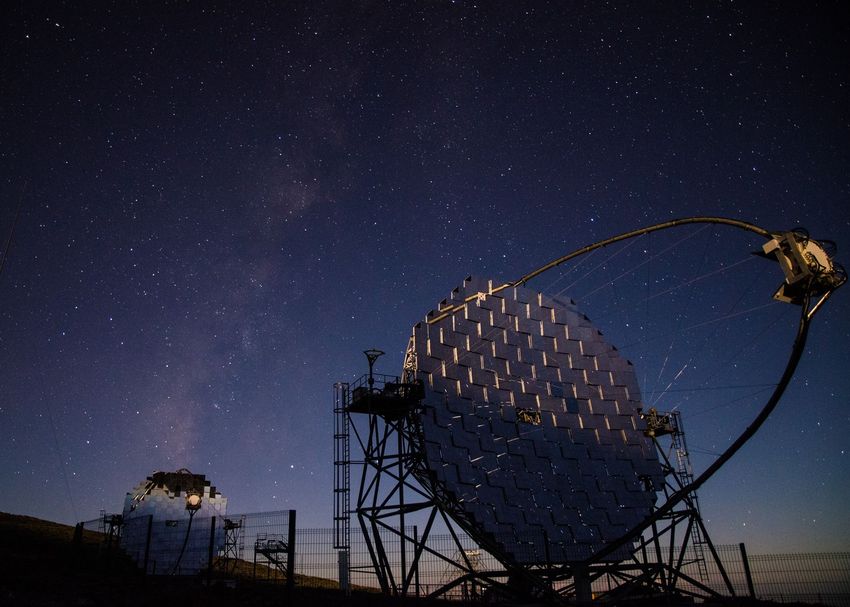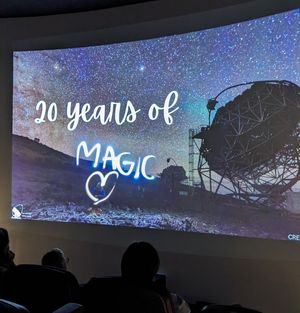In 2003, a success story of astrophysics began on La Palma: 20 years ago in October, the first MAGIC telescope was inaugurated on the Canary Island, a huge instrument with a mirror diameter of 17 meters. Five years later, the twin MAGIC II telescope followed. The two Cherenkov telescopes measure high-energy gamma rays from our Milky Way and distant galaxies. This allows astrophysicists to study fascinating objects such as stellar explosions, pulsars, black holes and gamma-ray bursts. The Max Planck Institute for Physics has been involved from the very beginning, and is currently responsible for several critically important parts of the telescope, like the overall structure and the camera.
With the two MAGIC telescopes, researchers succeeded in gaining significant insights into high-energy phenomena. This is evidenced by the more than 200 papers that have been published in scientific journals since "first light". These include, for example, the sensational observation of the first gamma-ray burst measured at very high gamma-ray energies.
In addition, the two instruments succeeded in tracking a rare cosmic neutrino. Thus, its probable point of origin - an active black hole in a galaxy in the constellation of Orion - could be clarified. And just recently, a nova observation provided important clues to the origin of ubiquitous cosmic rays.

